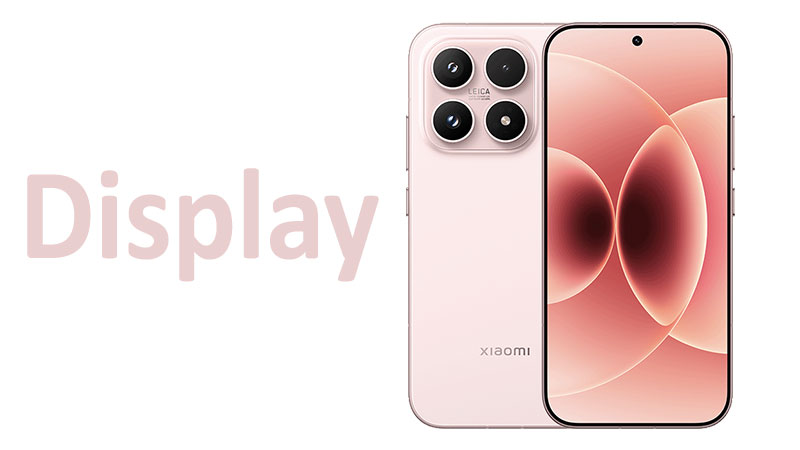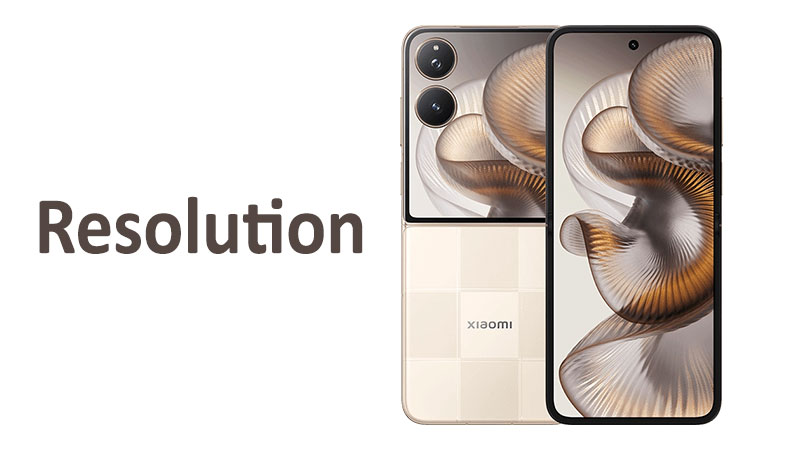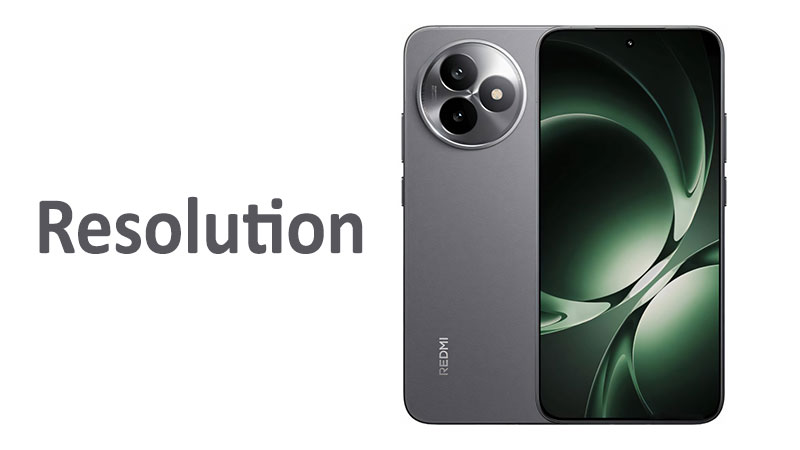The Xiaomi 17 Display system offers a fusion of high performance and comfortable design. The display is often the most important part of a new smartphone. It defines the entire user experience. This detailed article provides a comprehensive review of this flagship screen. We will examine its 120Hz refresh rate and its 3500 nits peak brightness. Understanding these technical specifications is key for an informed purchase decision.
The Core Technology: LTPO AMOLED
The primary display panel in the Xiaomi 17 uses LTPO AMOLED technology. This choice forms the foundation for its elite performance. LTPO stands for Low-Temperature Polycrystalline Oxide. This innovative technology provides distinct advantages over older AMOLED screens. It delivers spectacular visual quality while significantly boosting power efficiency. LTPO is now considered essential for all premium mobile devices.
Dynamic Efficiency of LTPO
LTPO enables a truly variable refresh rate capability. The display can dynamically adjust its refresh frequency instantly. It can scale down the rate to just 1 Hz for static content. For example, viewing a still photograph uses minimal power. This low rate capability drastically reduces the screen’s energy consumption. This is a major factor in improving the phone’s overall battery life.
Seamless Adaptation in Use
The display instantly ramps up its frequency when the user interacts. It quickly scales up to 120 Hz when you scroll a web page. This dynamic adaptation is crucial for maintaining both fluidity and efficiency. The phone delivers a fast screen experience without unnecessary battery drain. This intelligent management enhances the device’s all-day usability.
Specialized LTPO Comparison
The LTPO implementation in the Xiaomi 17 is state-of-the-art. It aligns with the best efficiency standards set by major competitors. The ability to reach a minimum of 1 Hz is noteworthy. Many older generation LTPO panels could only drop to 10 Hz. This 1 Hz floor offers a substantial power saving advantage. It particularly benefits the always-on-display feature and extended reading sessions.
Mastering Color: 68 Billion Colors and 12-Bit Depth
Color rendering is a critical measure of display quality. The Xiaomi 17 panel delivers outstanding color fidelity. It supports an impressive 68 billion colors. This specification is precisely defined as 12-bit color depth.
Smoothness in Gradients
The massive 12-bit color space is key for professional visuals. It allows for incredibly smooth and subtle color gradients. Users will notice virtually zero color banding in demanding video content. This level of accuracy is vital for photo editing directly on the device. It ensures that shades and tones are rendered precisely.
True-to-Life Color Accuracy
The display is capable of reproducing vibrant and accurate colors. It displays deep, inky blacks that are characteristic of AMOLED technology. The wide color gamut ensures true-to-life representation of photos and videos. This is essential for creators who demand high visual quality. The overall visual experience is rich, immersive, and highly realistic.
Buyer’s Note on Color Quality
A high color depth impacts the long-term value of the phone. As media quality improves, 12-bit panels remain relevant. Older 8-bit or 10-bit panels can show limitations with new content. The Xiaomi 17 is future-proofed for next-generation visual standards. This makes it an excellent choice for any media enthusiast.
The Brightness Revolution: Peak 3500 Nits
The peak brightness of the Xiaomi 17 display is truly exceptional. The screen can achieve an astonishing 3500 nits of luminosity. This high figure sets a new benchmark for flagship smartphones. This extreme brightness is crucial for two main areas. It ensures unmatched outdoor visibility and enhances HDR media.
Unmatched Outdoor Clarity
Screens with lower brightness often struggle outdoors. Direct sunlight makes them nearly impossible to read. The 3500 nit peak output effectively overcomes this challenge. The display remains perfectly legible even under the brightest sun. This extreme brightness typically applies to small screen highlights. However, the sustained brightness levels are also significantly high. The feature greatly enhances the phone’s practical, everyday usability.
Powering High Dynamic Range (HDR)
High brightness is the essential ingredient for true HDR performance. The 3500 nits allow the display to render dazzling highlights. These bright spots create a profound sense of depth and realism. The contrast between the deepest blacks and the intense whites is staggering. This capability delivers a superior, highly cinematic viewing experience. The high dynamic range is fully realized on this device.
Competitor Brightness Comparison
The 3500 nits rating establishes the Xiaomi 17 as a market leader. Many rival flagship devices often peak in the 2800 to 3200 nit range. Xiaomi has prioritized superior luminosity in this model. This makes the 17 a formidable option for users in extremely sunny environments. Its superior outdoor performance is a key competitive strength.
Fluid Motion: 120Hz Adaptive Refresh Rate
The 120Hz refresh rate provides exceptional smoothness and responsiveness. The screen updates its image 120 times every second. This rate is a 100% increase over the standard 60Hz rate. The resulting visual fluidity improves every interaction.
Benefits for Daily Interactions
Routine actions like scrolling a website appear extremely fluid. All system animations look fast and instantaneous. The high refresh rate significantly minimizes visible motion blur. This makes long periods of screen use much more comfortable. The 120Hz display is a primary driver of the phone’s premium feel. It elevates the entire user interface experience.
Enhanced Mobile Gaming
Competitive mobile gamers gain a substantial advantage from this fast screen. Games that support high frame rates can run at up to 120 FPS. This speed minimizes input delay and optimizes player reaction times. The display easily keeps pace with the powerful internal processor. It ensures a highly immersive and tear-free gaming environment. This makes the Xiaomi 17 an excellent platform for serious mobile gaming.
Synergy with LTPO Technology
The LTPO technology ensures the 120Hz speed is intelligently managed. The phone only uses the full speed when needed. It scales down the rate automatically during static moments. This adaptive process delivers maximum fluidity while preserving battery power. Buyers benefit from a fast screen experience that still lasts all day.
Eye Comfort Focus: 2160Hz PWM Dimming
Xiaomi has integrated critical features for user eye health and comfort. The display employs an ultra-high-frequency 2160Hz PWM dimming system. PWM stands for Pulse Width Modulation. This system regulates screen brightness at low levels. It controls light output by rapidly switching the screen on and off.
The Problem of Low Frequency Flicker
Older or less advanced AMOLED panels use low-frequency PWM dimming. This can cause visible screen flicker for some users. This flicker often leads to eye strain, fatigue, and even headaches. Many people are sensitive to these lower flicker rates. The 2160Hz frequency is designed to eliminate this specific issue.
The 2160Hz Solution
The 2160Hz frequency is far beyond the threshold of human perception. This rapid pulsing effectively removes any visible flicker. The display remains visually stable even when the brightness is set very low. This focus on flicker reduction is a major health benefit. It confirms Xiaomi’s commitment to providing a comfortable viewing experience.
Important Considerations for Buyers
Users who have experienced discomfort with other smartphone screens should note this feature. The high PWM rate minimizes the risk of eye strain. People who frequently use their phone in dark settings will greatly appreciate this technology. It ensures a premium visual experience without common AMOLED drawbacks. This feature makes the phone suitable for extended reading.
Cinematic Standards: HDR 10+, Dolby Vision, and HDR Vivid
The Xiaomi 17 display meets the highest criteria for cinematic playback. It holds certifications for all major High Dynamic Range formats. This guarantees the highest possible quality for video streaming. The phone is fully equipped to handle professional-grade content.
Multi-Format HDR Compatibility
The device supports Dolby Vision, HDR Vivid, and HDR10+ standards. Dolby Vision is a high-end, proprietary format using dynamic metadata. This ensures frame-by-frame optimization. HDR10+ is a similar open standard used widely by streaming services. HDR Vivid is an emerging standard, particularly important in Asia. This triple support guarantees the best visual quality from any source.
Visual Immersion in Media
The combination of extreme brightness and comprehensive HDR support is stunning. Colors are intense, and shadow details are perfectly preserved. This high contrast provides an unparalleled sense of visual immersion. The display delivers a truly flagship-level video experience. Streaming content is automatically delivered at the highest possible quality.
Specialized Comparison: HDR Standards
The inclusion of all three major formats is a strong competitive move. Some competitor phones may only support one or two of these standards. The Xiaomi 17 ensures maximum versatility for global content consumption. This compatibility future-proofs the phone for various streaming services worldwide.
Compact Power: Size, Resolution, and Sharpness
The Xiaomi 17 is positioned as a powerful yet compact device. Its physical screen dimensions and high resolution work together brilliantly. This combination is ideal for users who prioritize handling over size.
Ergonomics of the 6.3-Inch Screen
The main screen measures a comfortable 6.3 inches diagonally. This size is significantly smaller than many modern flagship devices. It improves the phone’s one-handed usability and pocketability. The compact form factor is a major selling point for many consumers. It makes the device much easier to handle over long periods.
Resolution and Pixel Density Analysis
The display features a crisp resolution of 1220×2656 pixels. This high resolution on a smaller panel creates exceptional sharpness. The resulting pixel density is approximately 464 ppi (pixels per inch). This density is highly impressive. Text, images, and video details appear remarkably clear and defined. This screen delivers a high-quality visual experience.
Bezel Management and Aesthetics
The screen-to-body ratio stands at a high ∼89.5%. This indicates that the bezels surrounding the display are very thin. This maximizes the usable screen area within the compact chassis. The overall aesthetic is sleek and modern. The high ratio contributes to a more immersive viewing experience.
Durability and Protection: Xiaomi Dragon Crystal Glass
Every flagship display requires equally robust protection. Xiaomi has equipped the 17 with its own proprietary glass solution. This protective layer is named Xiaomi Dragon Crystal Glass. It offers strong defense against daily wear and tear and accidental damage.
Resistance to Scratches and Drops
Dragon Crystal Glass is specifically engineered for superior hardness. It provides strong resistance against micro-scratches from keys or coins. It also improves the panel’s resilience against impacts from accidental drops. This durability is essential for preserving the screen’s pristine condition. The quality of the glass helps maintain the phone’s resale value.
Comparison to Other Protective Glass
While proprietary, Dragon Crystal Glass competes directly with established brands. It offers a level of durability expected from a premium device. Its performance ensures peace of mind for daily use. Users should treat this glass as a top-tier protective solution. It guarantees high resistance to common hazards.
Buyer’s Safety Recommendations
Even with the toughest glass, caution is always advised. No screen is entirely indestructible. Buyers should seriously consider using a high-quality protective case. Adding a simple screen film can offer extra defense against deep scratches. Prudent users ensure they protect their valuable display investment.
Comprehensive Pros and Cons Summary
Evaluating the entire display package requires a balanced assessment. The Xiaomi 17 screen offers significant technological advantages. However, buyers should be aware of a few structural trade-offs.
Key Display Advantages (Pros)
The 3500 nits peak brightness offers unmatched outdoor visibility. The 120Hz LTPO rate provides superior fluidity and power efficiency. The high ∼464 ppi density ensures exceptional sharpness in a compact size. High-frequency 2160Hz PWM greatly reduces eye strain and flicker. Full HDR support guarantees the best cinematic video quality.
Potential Display Drawbacks (Cons)
The 6.3-inch size may feel restrictive for extreme media consumers. Users accustomed to large screens may find the form factor too small. The proprietary Dragon Crystal Glass replacement may incur a high repair cost. The lack of a secondary display, unlike the Pro Max, means less versatility for some. These are minor trade-offs for a powerful, compact phone.
The Ultimate Buyer’s Guide for Display Selection
Selecting the Xiaomi 17 means choosing a specific size and performance mix. Use this guide to determine if this display is the right fit for your needs.
Assessing Your User Profile
The phone’s size and performance suit particular user habits.
The Compact User
This user prioritizes easy one-handed operation and portability. They appreciate a device that fits comfortably in any pocket. The 6.3-inch screen and high 464 ppi are perfect for this profile.
The Outdoor / Brightness Seeker
This user frequently uses their phone outside in direct sunlight. They need a screen that is always legible and clear. The 3500 nits peak brightness makes this device an excellent match.
The Casual Gamer / Media Streamer
This user values fluid scrolling and high-quality video playback. The 120Hz LTPO and comprehensive HDR support are ideal for them. This phone provides a high-quality media consumption experience.
Long-Term Value and Investment
Display technology evolves rapidly, but the 17 is highly future-proofed. The 12-bit color depth and 1 Hz LTPO efficiency are cutting-edge. These features will remain competitive for many years. Investing in the Xiaomi 17 ensures a display experience that will not feel outdated quickly. This makes it a sensible, long-term purchase.
Comparison to Larger Models
Buyers must decide between the Xiaomi 17 and the larger 17 Pro Max. The 17 is sharper (higher ppi) and more comfortable to hold. The 17 Pro Max offers a much larger 6.9-inch canvas. If screen size is paramount, choose the Pro Max. If sharpness and handling are key, the base Xiaomi 17 is superior.
Conclusion: Making the Right Display Choice
The Xiaomi 17 Display is a technical achievement in a compact form. It seamlessly integrates 3500 nits of brightness with adaptive 120Hz LTPO technology. The high pixel density ensures maximum sharpness for its size. Furthermore, eye comfort is prioritized through the 2160Hz PWM dimming. Choosing the Xiaomi 17 means selecting a flagship display that offers superior handling and outstanding visual quality. It is the definitive choice for the compact power user.
Frequently Asked Questions (FAQ)
1. What does LTPO mean for my phone’s battery life?
LTPO technology allows the screen to adapt its refresh rate. It drops to low frequencies for static images. This dynamic change significantly saves battery power over time.
2. Is the 120Hz refresh rate always active on the screen?
No, the 120Hz rate is adaptive due to LTPO. The phone only uses the full speed when needed, like during scrolling or gaming.
3. Will the 3500 nits brightness harm the screen over time?
No, 3500 nits is a peak value only used for HDR content highlights. The brightness reverts to safe sustained levels for general use.
4. How sharp is the Xiaomi 17 display compared to other phones?
The 6.3-inch display has a high density of 464 ppi. This makes text and images exceptionally sharp, especially for its compact size.
5. What type of protection does the Xiaomi 17 screen have?
The screen is protected by Xiaomi Dragon Crystal Glass. This proprietary material is designed to offer high resistance against scratches and drops.



